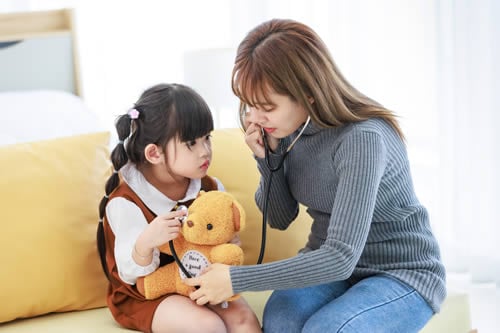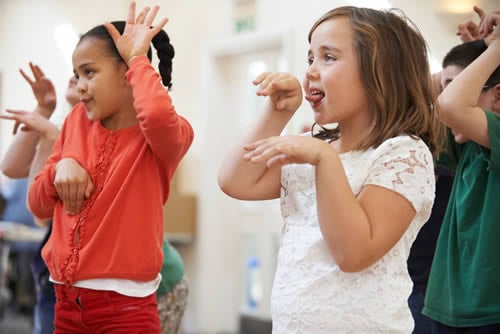Seeing King Charles III glide solemnly through Westminster Abbey in his velvet robes and regalia for his coronation, how many of us are secretly reminded of the school dressing-up box? Back in the day, a fancy hat and an old curtain round your shoulders, and you, too, might have imagined yourself the ruler of a magnificent kingdom.
For Charles, the lavish outfit and the ritual is an integral part of marking a historic moment and making it ‘real’. But for children all over the world, dressing up and pretending to be someone else for a while is part of everyday life. According to the experts, this is more than just mucking about – it’s a crucial aspect of childhood learning, stimulating creativity, cooperation and problem-solving.
Role-Play Can be a Way of Practising Tricky Social Situations

SEN tutor Jane used role play to amuse her four children when they were very young. “We used to have ‘Teddy Shows’ as a bedtime routine,” she recalls. “I’d use a range of cuddly toys to act out different scenarios. It was just for fun and they loved it.”
As her children got older, however, she found that a similar technique was a very effective way of helping her kids to negotiate difficult situations at school. “One of my daughters was badly bullied in Year 4,” she explains. “Of course, it was awful and it shouldn’t have been happening but there’s no point saying that to a child – you have to give them strategies to be able to deal with it.
“The bully used to accuse my daughter of doing all kinds of things and refused to speak to her till she’d apologised,” Jane continues. “My daughter was frightened of this girl so she would always give in. We started acting out the scenarios with the teddies, taking it in turns to be the bully and my daughter. This helped her to see the situation from all angles and look at different ways of responding. Things didn’t change overnight but she was eventually able to say, ‘I’m not apologising,’ and move away from this girl.”
Group acting games can also help a whole class to think about bullying and discrimination, she carries on, giving the example of a teacher who separated children into groups according to eye colour. Those with eyes of a certain colour were told they were ‘inferior’ in the game, leading the children to discuss how it felt to be excluded and what others could do to help. “Where there’s bullying, there are often followers who see what’s going on but are too scared to do anything about it. This exercise could help children to see that they have choices.
Role-Play and SEN Students

Although Jane’s children are now grown-up, she still uses role-play with her SEN students. “I work with one boy who has autism and PDA,” she elaborates. “A lot of PDA children are very comfortable with imaginative games. This young man is averse to any learning so almost everything we do is role play – in fact, if I tried to give him an ‘ordinary’ lesson, he’d just walk out!
“He thinks we’re just playing but I try and introduce some learning into the games,” she carries on. “Last time, we talked about the planets, what their names are and how far they are from the Sun. Sometimes I think he almost realises what I’m doing because he says, ‘I don’t want to play that any more’. I’m careful not to overdo it.”
Imaginative Play Can be Helpful for Autistic Girls

Jane has noticed that role-play can also be a useful tool for girls with ASD who may be struggling with social situations. “They don’t always understand how they’re perceived,” she says. “I did a couple of sessions with an eleven-year-old girl who was the sister of one of my students. Her parents asked me to step in because she was autistic and having a hard time with friends. We did some role-play and it must have been helpful because a few months later, she’d started at secondary school and had made a couple of new friends.
“When I helped my daughter with the bullying problem, it was much harder because I was emotionally involved,” she adds. “With this student, it was easier. I could step back a bit but it still worked because she liked and trusted me.”




